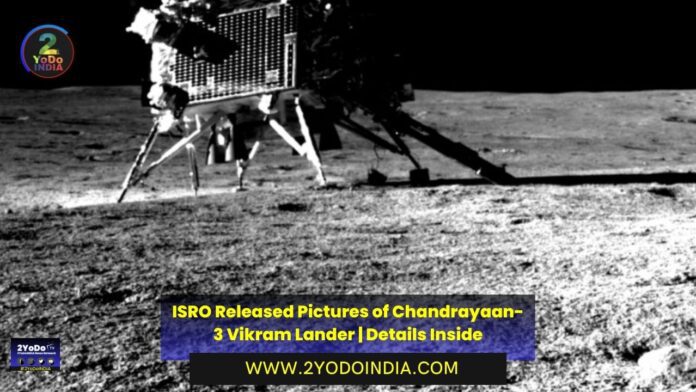ISRO today (30th August, 2023) release the pictures of Chandrayaan-3 lander, the first photos of Vikram release by the space agency since its historic landing on 23rd August 2023.
The photos, taken by the rover Pragyan at 7.35am on 30th August, 2023, show the ramp that allow the rover to roll out, aside from two payloads descending on to the lunar surface for in-situ experiments.
The two payloads seen descending from Vikram are Instrument for Lunar Seismic Activity (ILSA) and Chandra’s Surface Thermo Physical Experiment (ChaSTE).
Chandrayaan-3 Mission:
— ISRO (@isro) August 30, 2023
Smile, please📸!
Pragyan Rover clicked an image of Vikram Lander this morning.
The 'image of the mission' was taken by the Navigation Camera onboard the Rover (NavCam).
NavCams for the Chandrayaan-3 Mission are developed by the Laboratory for… pic.twitter.com/Oece2bi6zE
These navigation cameras on Pragyan, the ones that guide the rover, were develop in a quiet lab call as LEOS in Bengaluru.
These cameras are the eyes of Pragyan, allowing it to navigate on the lunar surface and also sending in pictures.
Chandrayaan-3's Pragyan Rover Confirms Presence of Sulphur on Moon, Search for Hydrogen Underway: ISRO
— 2YoDoINDIA News Network (@2yodoindia) August 30, 2023
for more news visit https://t.co/98KV4yIruC#2YoDoINDIA #ISRO #Chandrayaan3 #PragyaanRover #Pragyan #Sulphur #LunarSurface pic.twitter.com/YG6ybeOtan
For every path planning, data from these navigation cameras need to be download to ground where a digital elevation model (DEM) is generated.
Then, the ground and mechanisms teams decide which path is best for Pragyan and uplink the command for the rover to follow.
The Pragyan rover simply cannot rove indefinitely.
Just as human eyes can only see up to a certain distance, there are limitations on the rover too.
P Veeramuthuvel, Chandrayaan-3 project director Said :
“The maximum DEM that can be generate is only for 5 metres each time the navigation camera sends images, which means every time the rover is command to move, it can at best cover 5 metres. Even there, there are challenges of obstacles etc,”.
Till now, Pragyan has safely negotiate a small crater with a depth of 10cm (100-mm) crater and avoid and a larger crater (4m diametre) with the help of these cameras.





